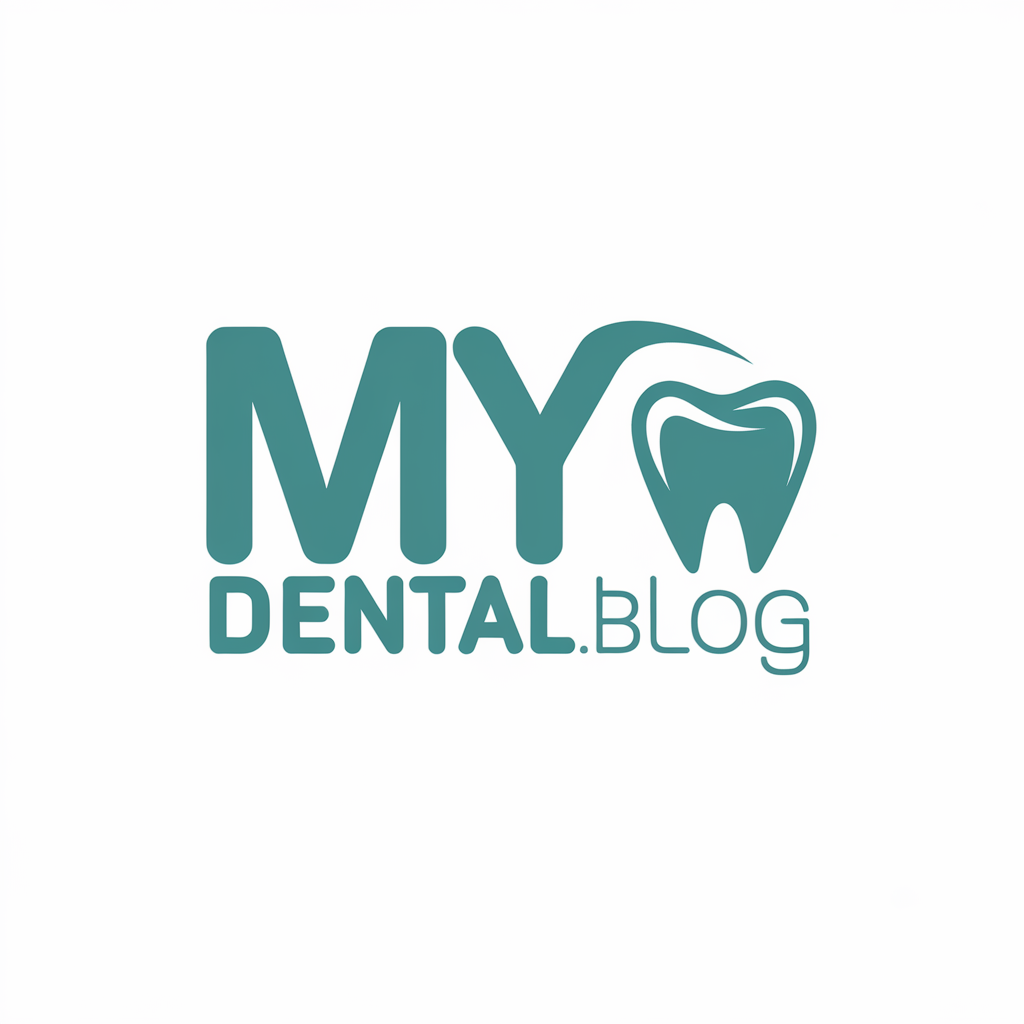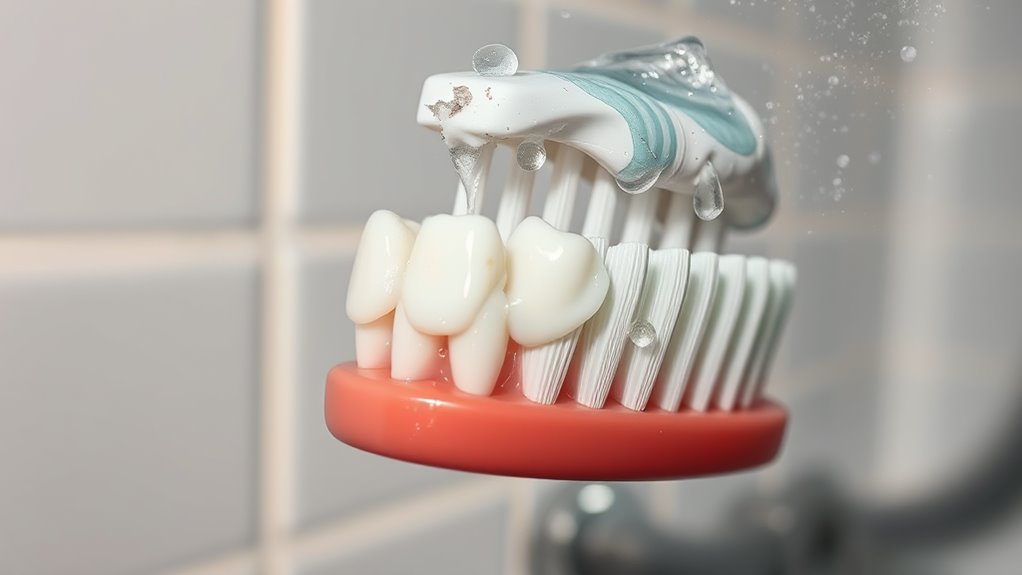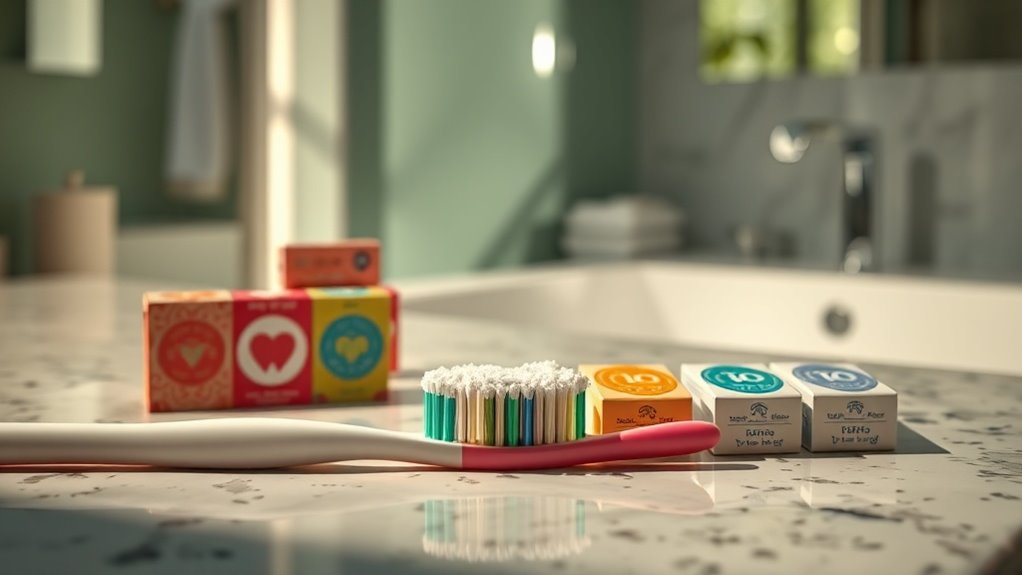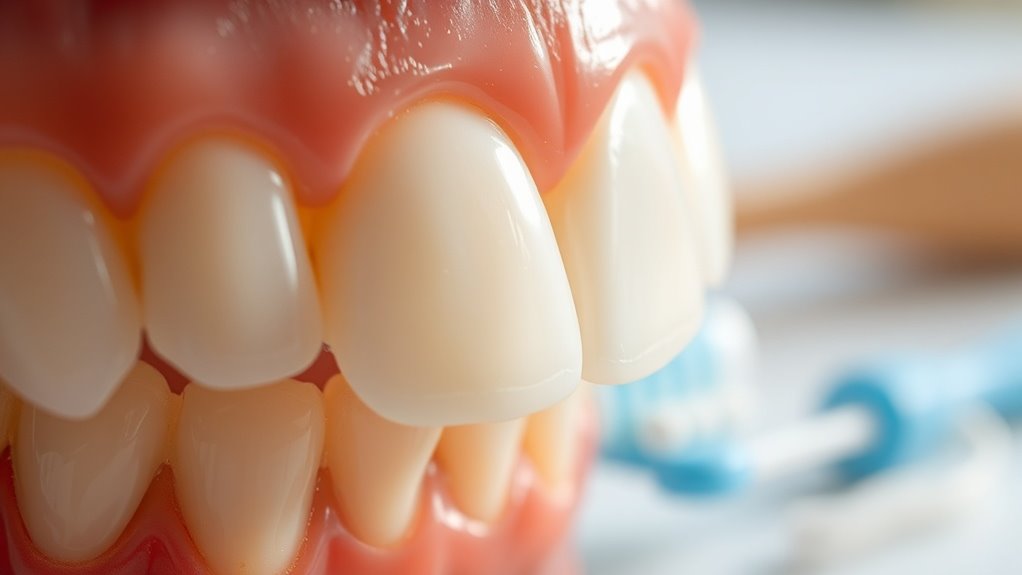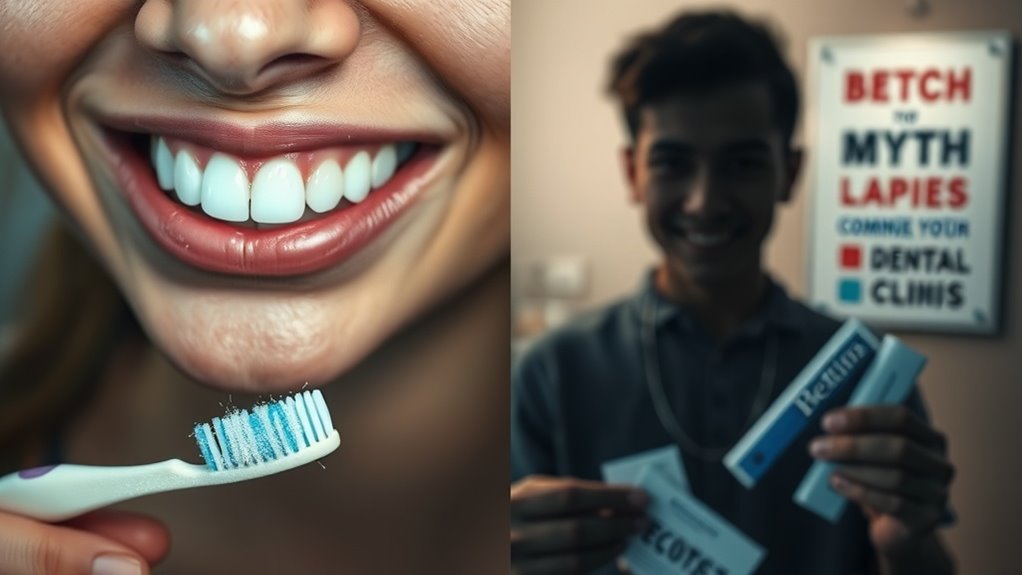Think Brushing Harder Means Cleaner Teeth. Think Again
Brushing harder doesn’t mean cleaner teeth; in fact, it can harm your gums and erode enamel. Excessive pressure damages sensitive tissues, leading to increased sensitivity and dental problems. Instead, use a soft-bristled toothbrush with gentle, circular motions for effective plaque removal. Aim for two minutes of brushing at the right angle to protect your gum line. Curious about the best techniques and tools for maintaining your oral health? There’s more important information you should know.
The Myth of Hard Brushing
Many people believe that brushing harder will lead to cleaner teeth, but this common misconception can actually do more harm than good.
This brushing myth overlooks the fact that using excessive pressure can damage your gums and enamel.
Instead, focus on using a soft-bristled toothbrush and gentle, circular motions to effectively remove plaque and maintain oral health without risking injury. Additionally, frequent hard brushing can contribute to enamel erosion and increased sensitivity over time.
Understanding Tooth Enamel
Brushing too hard can lead to enamel erosion, underscoring the importance of understanding tooth enamel.
This protective outer layer of your teeth is crucial for their health and longevity. Enamel shields against decay and sensitivity, but once damaged, it doesn’t regenerate. It’s important to note that genetic variations can significantly influence enamel strength, further emphasizing the need for proper care.
Knowing how to care for it can help preserve your smile, making gentle brushing techniques essential for maintaining strong, healthy teeth.
Proper Brushing Techniques
To maintain optimal dental health, you need to adopt proper brushing techniques that not only clean your teeth but also protect your enamel.
Focus on:
- Using gentle, circular motions to avoid damaging your gums.
- Brushing for at least two minutes, ensuring you reach all surfaces.
- Keeping your toothbrush at a 45-degree angle to effectively clean along the gum line.
Additionally, it’s important to master the modified Bass technique to maximize plaque removal and promote healthier teeth. These practices will enhance your oral care routine.
The Role of Brush Type and Bristles
Choosing the right toothbrush and bristle type is crucial for effective oral hygiene. Soft bristles effectively clean without damaging your gums, while medium or hard bristles can lead to irritation. Consider a brush with a smaller head for better access to difficult areas. Electric toothbrushes can also enhance plaque removal, making them a great option for maintaining a healthy smile. Additionally, adopting a gentle brushing technique helps protect enamel and promotes better oral health.
Effects of Over-Brushing
Many people underestimate the consequences of over-brushing their teeth. Excessive force can lead to several issues:
-
Enamel erosion: Wearing down your protective tooth layer.
-
Gum recession: Causing sensitivity and exposing roots.
-
Increased tartar buildup: Prompting more plaque and cavities.
Instead of scrubbing harder, focus on gentle techniques. Gentle brushing techniques are crucial for maintaining gum and tooth health. Your teeth and gums will thank you for it!
Tips for Maintaining Oral Health
Practicing good oral hygiene goes beyond just brushing; it involves a comprehensive approach to maintaining your teeth and gums.
Floss daily to remove plaque between teeth, use an antibacterial mouthwash, and schedule regular dental check-ups.
Keep a balanced diet rich in calcium and avoid sugary snacks.
Remember to change your toothbrush every three months to ensure effective cleaning.
Prioritize your oral health! Additionally, maintaining good oral hygiene aids in diabetes management as poor dental health can complicate the condition.
